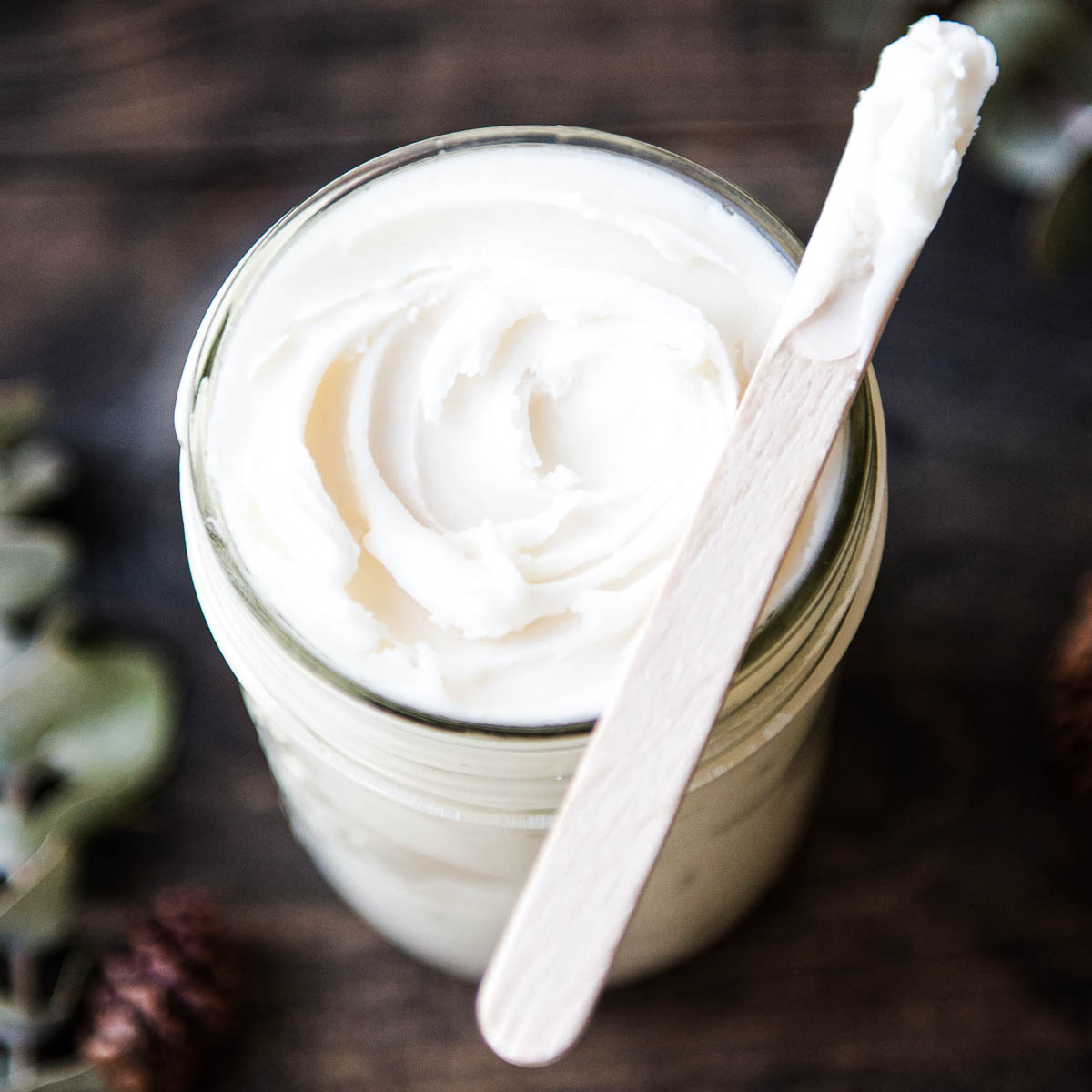
This post may contain affiliate links, meaning I can earn a small commission from items you purchase (at no cost to you).
Table of Contents
I’ve used countless store-bought natural deodorants, and they always leave me stinky and sweaty. In 2011, I decided to make my own homemade deodorant recipe. After a few tweaks, I have created the best natural diy recipe that smells great, works wonders and I’ve used for 13 years now. I’ve shared this recipe with thousands of others— and I can’t wait for you to join my diy deodorant party.
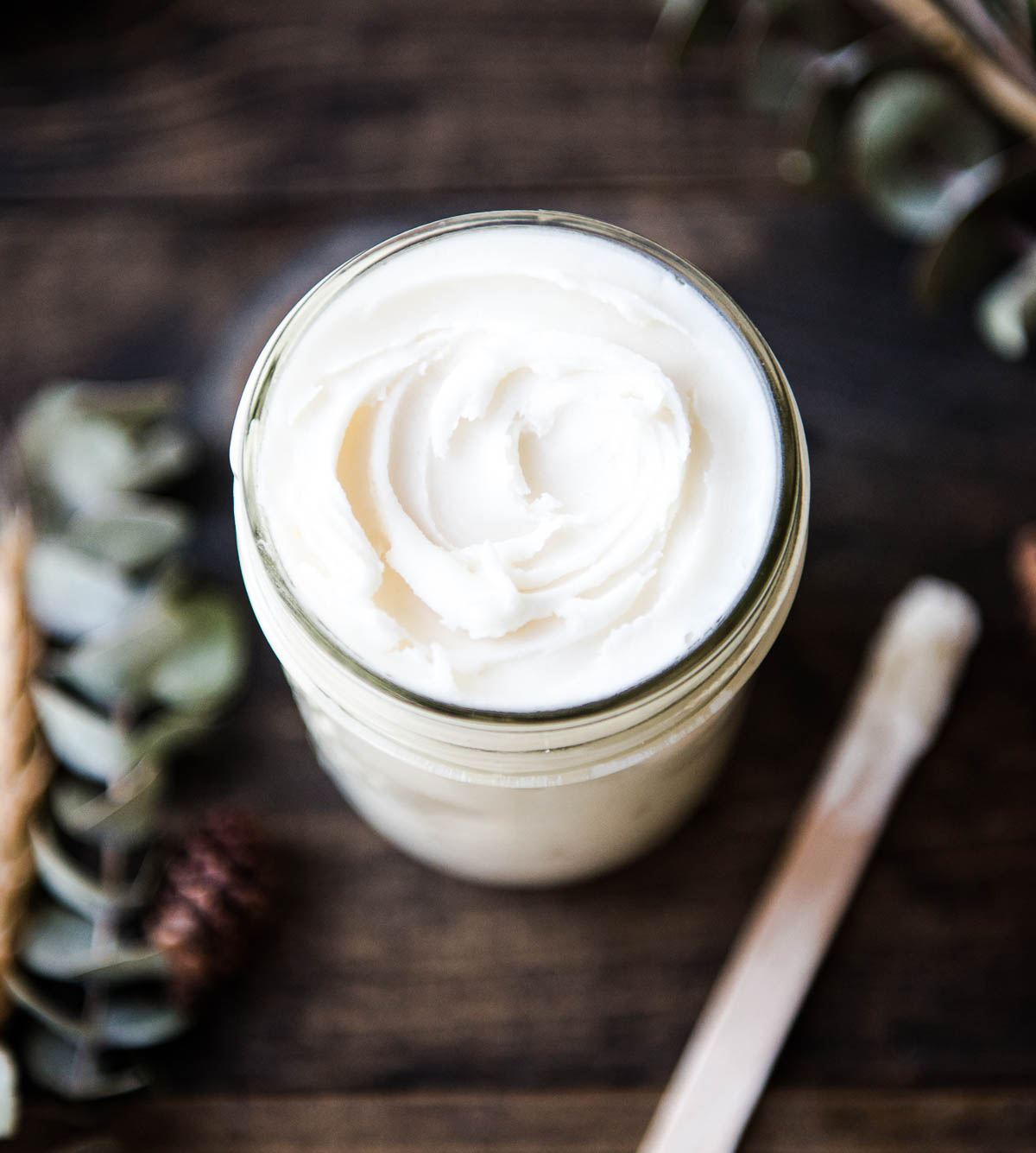
Why I Use Natural Deodorant
Making your own deodorant saves money, is healthier for your body, and actually stops sweating and body odor. Seriously, jump on this bandwagon ASAP!
In 2011, I went on a journey and started making homemade granola bars, natural cold and flu remedies like ginger lemon honey tea, elderberry syrup, homemade lip scrubs, and even went 10 days without shampoo (I don’t recommend that last one).
It was during this time that I began questioning all the things I was putting in and on my body.
Most store-bought deodorants contain chemicals like parabens and aluminum, which I wanted to avoid. Why use those when you can create the best natural deodorants with safer, more effective active ingredients? Even newer products with labels like organic deodorant often include ambiguous ingredients like “fragrance.”
To me, that’s reason enough to ditch commercial deodorants and make my own. I’ve been using the same recipe for over 13 years now, and I absolutely love it and use it every day. The only thing I change up is the essential oils I use, depending on what scent I feel like that season.
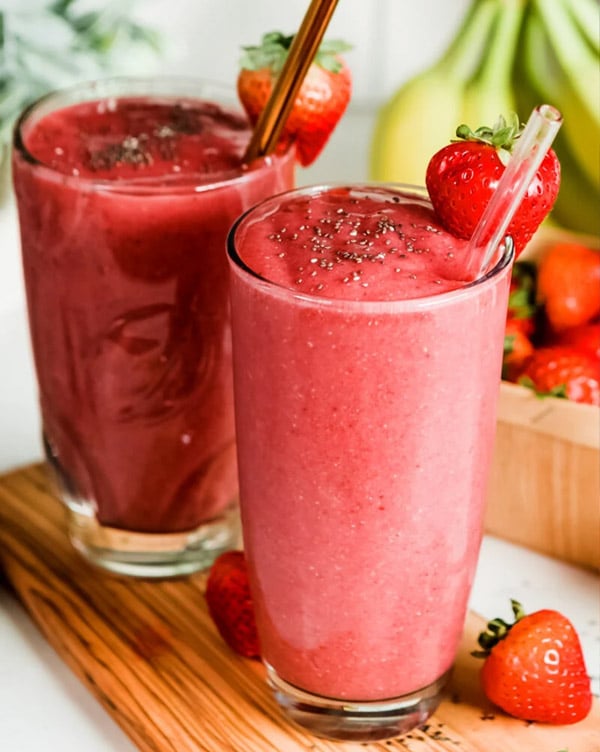
Free 5-Day Smoothie Plan
Get my free smoothie plan to feel lighter, leaner, and more energized—in just 5 minutes a day.
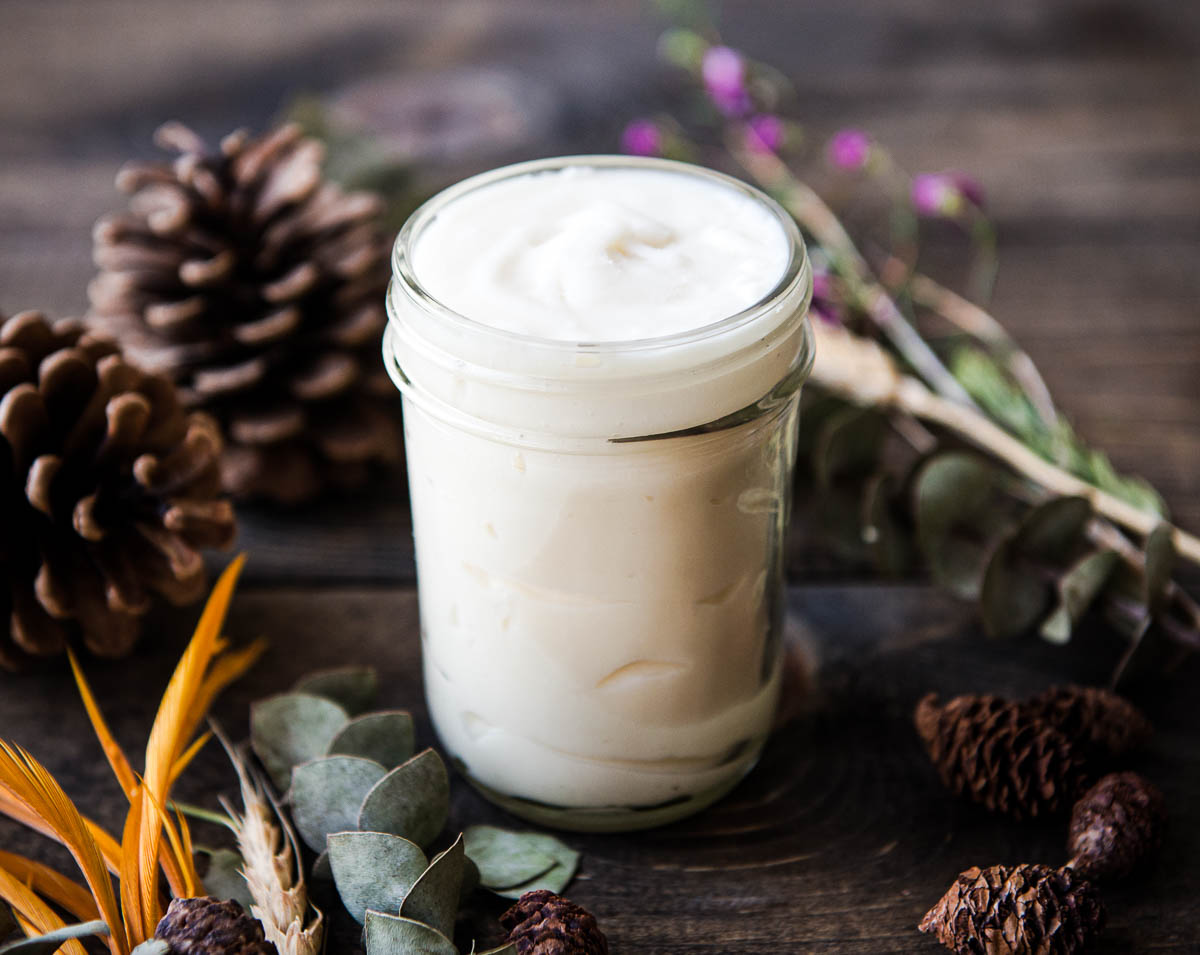
The Best Natural Deodorant Recipe
No joke—you can put this deodorant on at 5AM, run a few miles, blend the world’s Best Green Smoothie, throw on some work clothes, work an 8-hour shift and come home smelling good.
At first, my husband and I were baffled by how well this DIY deodorant worked. We would smell each other’s armpits just to brag. Then we decided to push the boundaries and slathered it on before a long day of helping friends move. We sweated all day and still came home smelling good!
It’s important to note that this is not an antiperspirant deodorant. We are meant to sweat, it’s natural. The harmful chemicals in conventional deodorants to stop the body’s natural need to sweat is not something I want to use (and you prob don’t either).
Ingredients You’ll Need
You only need four ingredients to make your own all-natural deodorant. Chances are you probably have at least half of them already. You can buy arrowroot powder in the baking section of most natural food stores or online.
- Baking soda: Absorbs moisture to keep you dry and helps neutralize odor (feel free to use less if you’ve got sensitive skin and notice irritation in your underarm area). Opt for aluminum-free baking soda, as it’s gentler and free from unnecessary additives.
- Non-GMO arrowroot powder: A better choice than traditional cornstarch, arrowroot powder helps absorb moisture to keep you dry. You can easily find it in health food stores or online.
- Organic unrefined coconut oil: Provides a moisturizing base and has natural antibacterial properties that help combat odor-causing bacteria. You can find this in most grocery or health food stores.
- Essential oils: Grapefruit oil, tea tree oil, spruce oil, and sweet orange oil are my favorites for their refreshing scents and antibacterial properties. They add fragrance while also helping to fight odor naturally.
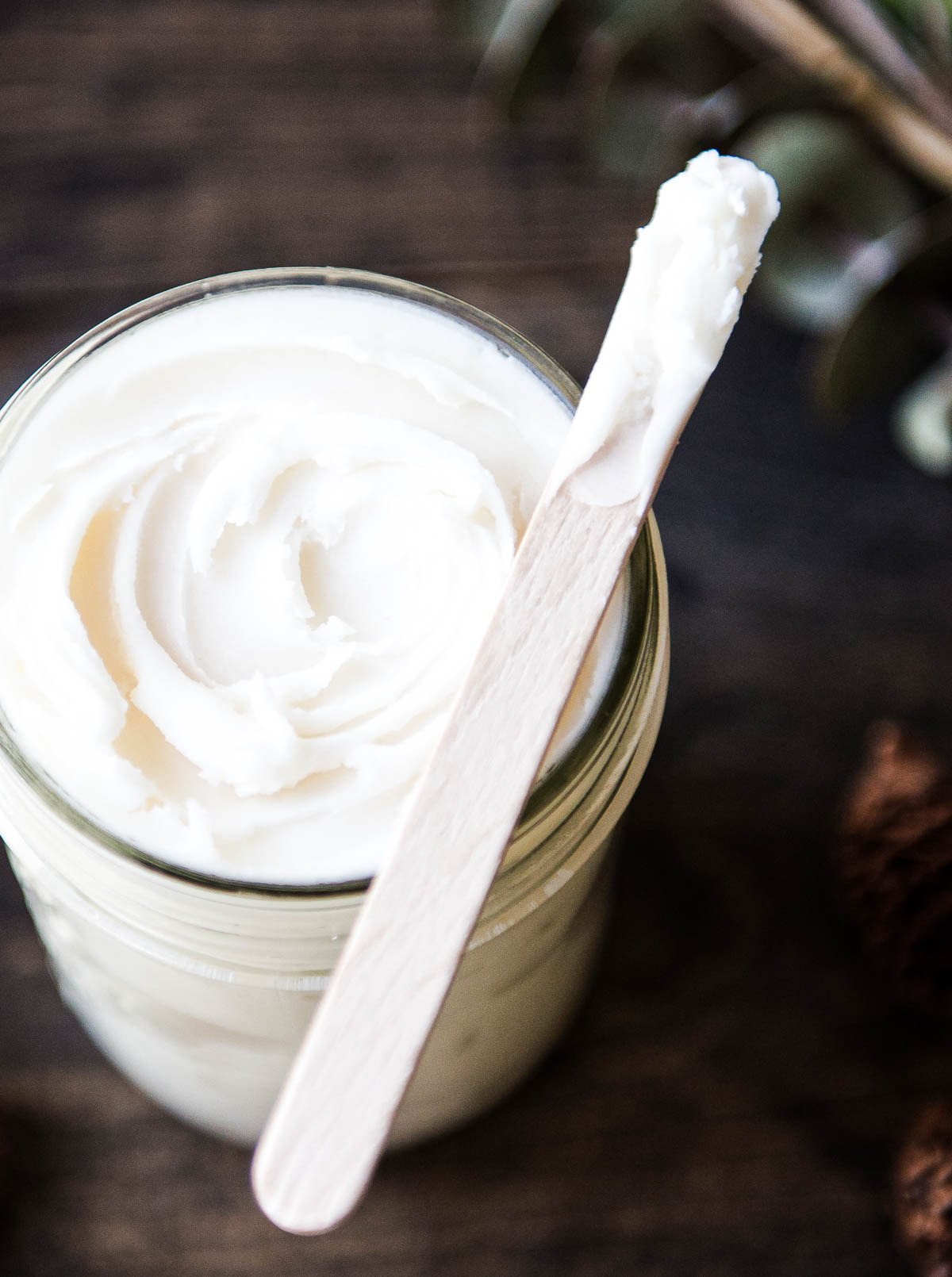
How to Make Homemade Deodorant
This DIY deodorant recipe is super quick to whip up with just four ingredients. If you’ve ever wondered how to make deodorant at home, don’t worry—I’ve got you covered! Just follow these 4 simple steps:
- Mix the arrowroot powder and baking soda together. I use my Kitchenaid Stand Mixer.
- Add the coconut oil and your favorite essential oils, like grapefruit or tea tree, to the mixture. You can adjust the consistency by adding more coconut oil if needed.
- Pour into a small glass jar (I like pint-size mason jar) and store at room temperature. Homemade deodorant will last up to two years in an airtight container.
- Use a popsicle stick to get the deodorant out of the container and transfer to your finger. Make sure you use enough under your arms to keep you “sure” all day long. A pea-size amount is usually good.
Application Tip
If you’d prefer to have it in a traditional “stick form,” melt 1 tbsp of beeswax and 1 tbsp of shea butter right into the recipe. Pour into a reusable deodorant containers and store in refrigerator until solid.
Tips for Switching to Natural Deodorant
- When you initially make the switch, you may experience an itchy rash, red bumps, or increased sweat and odor when transitioning to a homemade deodorant. Don’t let this stop you!
- Drinking plenty of water and dry brushing are two awesome ways to assist your body as it adjusts away from the chemical-laden deodorants you used to use. My #1 recommendation (drumroll, please!) is to detox your armpits. Sounds weird, I know! But it’ll help speed up your body’s adjustment period to this natural homemade deodorant.
- In addition to detoxing your armpits, you may also want to consider detoxing your whole body. All the processed foods we eat contain chemicals that end up affecting the way we smell when we sweat. Try out a 21-Day Cleanse to get started on a whole-body detox.
- These cleanses are super easy to follow and use only whole, plant-based foods (no expensive supplements!) to gently clear your body of unwanted toxins.
Common Questions
Making your own deodorant at home is easy with just a few simple ingredients like baking soda, arrowroot powder, coconut oil, and essential oils. It’s a natural, effective way to stay fresh without any harsh chemicals. Once you gather your ingredients, you’ll be able to whip up a batch quickly and enjoy the benefits of homemade, toxin-free deodorant.
To extend the effectiveness of homemade deodorant, apply a thin layer to clean, dry skin. Storing it in a cool, dry place will prevent melting or spoilage, while absorbent ingredients like arrowroot powder can help increase its longevity by controlling moisture and odor.
Yes, coconut oil is a key ingredient in my homemade deodorant recipe. Its natural antibacterial properties help fight odor while keeping your skin moisturized.
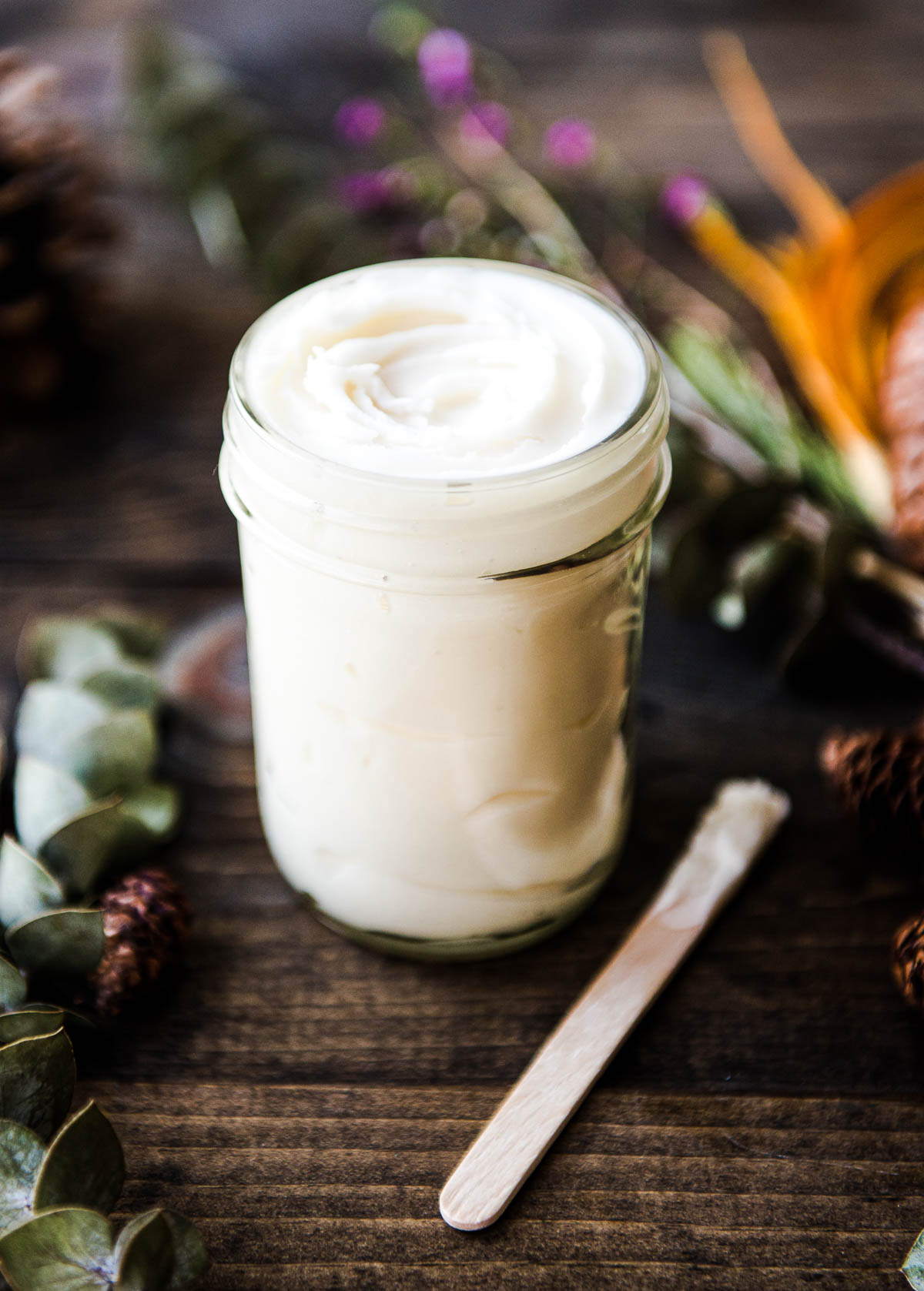
Leave a rating and review to let me know how this diy deodorant recipe works for you! As you can tell by the over 200+ reviews so far, this is a recipe you must try.
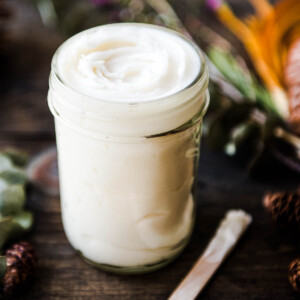
Best Homemade Deodorant
Ingredients
- ½ cup baking soda use 1/4 cup if have sensitive skin
- ½ cup arrowroot powder or cornstarch
- 5 tablespoon coconut oil, unrefined melted or softened
- 20 drop essential oil grapefruit, tea tree oil, etc
Instructions
- Mix baking soda and arrowroot together.
- Add the coconut oil and essential oils. Mix well.
- Pour into a clean, air-tight jar and store at room temperature.
- Use a popsicle stick to get the deodorant out of the container and transfer to your finger. Use a pea-sized amount to apply under your arms.
Notes
- Consistency: This deodorant changes consistency depending on the temperature. In cold climates, it can be pretty hard to get out. If that’s the case for you, I recommend storing it by the shower and allowing the steam to warm it before applying. If you live in a warm climate and the deodorant is too liquidy, store it in a cool cupboard to thicken it up.
- Technique: For the past couple of years, I stopped using the popsicle stick and actually just use my fingers and dip them in the jar.

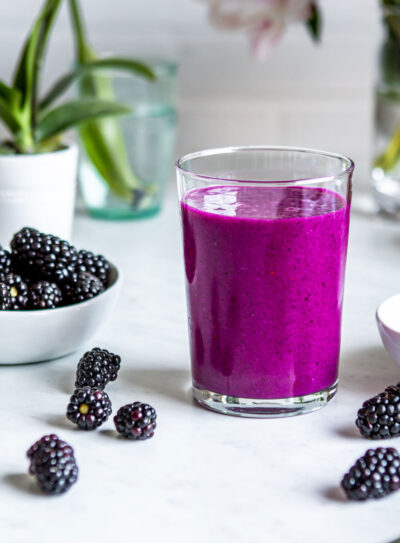
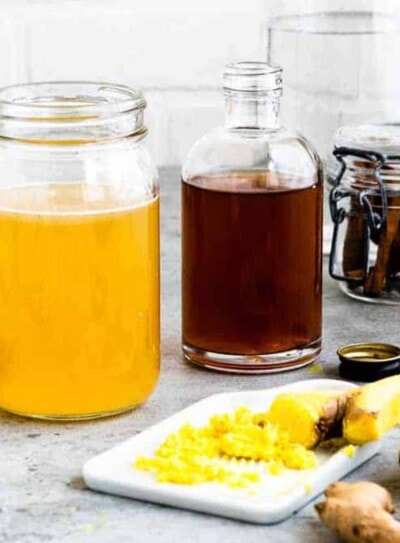
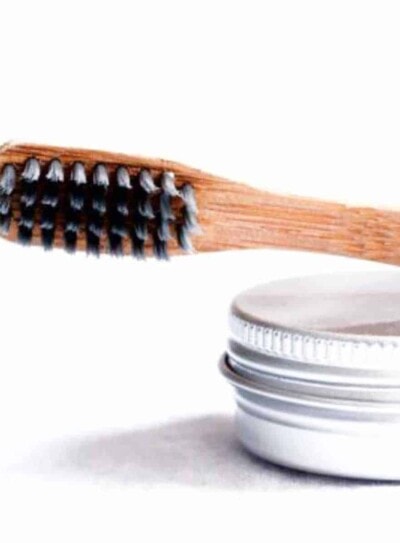
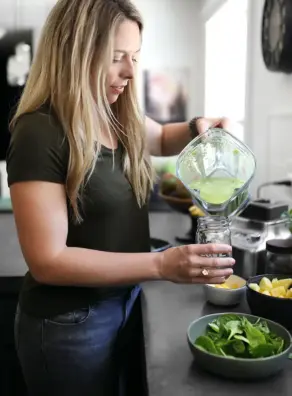
does this leave a residue on clothes? If so, How do you apply this beyond just with a finger or popsicle stick?
Thanks so much!
That’s a great question! Baking soda won’t bleach your clothes, but it could leave a white or residue or look a little streaky. I would recommend using less than the recommended amount in the recipe, so maybe 1/4 cup (instead of a 1/2 cup) to start and if you notice any light streaking in the underarm areas of your dark clothing, you should just be able to wipe it away with a damp towel. So, no permanent damage!
And yes! A popsicle sticks and fingers are perfect applicators! I’ve used both!
If you see the words detox, toxins, purify and similar …. It’s nonsense. And smelling of tea tree oil is as unpleasant as body odor. Bathe and use deodorant like an adult please. I know you’re very precious and the best says “toxins bad” but despite your favor koolaid, no excuse to stink
We love hearing your feedback Anne!! Every body is different for sure, so feel free to add your own oil combination that you enjoy or even leave it unscented!
Absolutely incredible
Thanks so much for this, I’m almost at the end of my first jar, lavender scented which is great. The only thing is that after two days’ use I end up with huge red, painful weepy sores. Sometimes the pain is so bad I have to wash it off and then leave it to settle for a few days before using again. Do you think I could hugely reduce the baking soda or even omit to completely and replace with extra arrowroot powder? Or is this likely to effect how well it works? I’m not keen on diatomaceous earth as an alternative. Thanks
I am NOT the author of the recipe, I have been making my own stuff for a while now…you really need to figure out what is the cause of the reaction. Do you have sensitivity to baking soda? Where did you get your essential oil? Do you have a reaction to essential oils? Perhaps just try arrowroot and coconut oil to start.. please make sure they are of high quality
Hi Leanne, I’m so sorry to hear that that’s happening to you. Sounds like no fun at all. You’re definitely on the right track – some people are highly sensitive to baking soda. Good idea to substitute baking soda with arrowroot powder. You can also try cornstarch! I would love to know the alternative that you try and how it works out for you!
Have you used lavender essential oils in other recipes that come into contact with your skin? If you replace the baking soda and are still getting reactions, maybe try a different scent. I have a similar reaction to rose oil. 🙁
Are essential oils necessary? I have allergies. Merci.
Hi Penny – great question! The essential oils actually are not totally necessary in this recipe for Homemade Deodorant. They are just used to provide your preferred scent, but you can totally go unscented. 🙂
Random question… so my husband and I have been using for almost 2 months now (and SWEAR BY IT I might add even sharing with others lol) but one of my arm pits I have noticed has dry patches… is that normal you think? We’ve been using natural deo for a few years after both our moms had breast cancer so thought this was odd. Oh and for those skeptical, you NEED to give this a try!!! It’s truly amazing. We live in TN and it’s been HOT and we garden/chickens/homestead and it’s has been the best deo ever! Way better than Native dreamed to be.
Hi Mary,
I’m glad you like the deodorant so much! Sorry to hear about your dry patches though. I’d recommend seeing a dermatologist, or swapping out the homemade deodorant for an alternative to see if the condition improves. I know that’s kind of a trade-off though. Best of luck!
I’m in AZ too. My “solid” coconut oil is liquid from pretty much March/April to Oct/Nov since coconut oil melts at 76*.
I add a TBSP or two of the refined (white) beeswax pellets to the mix. (don’t use the natural brown beeswax straight from the honey farm – that does stain over time!)
Amazing! It works. I used extra virgin organic coconut oil and lemongrass essential oil in mine and it’s lovely. My pits smell like a lemon meringue coconut cream pie☺ Lasted all day and through a 5 mile bike ride in the summer heat. Thanks so much for sharing this recipe!!
I love this, Shana! Lemongrass is my FAVE!!
I made this and it does work really well. I was very pleasantly surprised after a hard workout then a 4 mile walk no smell. NONE!! Thank you LOVE IT!!
Is there a good substitute for coconut oil? I’m allergic 🙁
Hey Hannah – great question! I would recommend trying shea butter. I would start with using the same measurement and adding more as needed to reach the desired consistency. 🙂
Absolutely the best recipe EVER! Some how I already had the ingredients. I had to put about 2-3 more table spoons of coconut oil in…Then whipped it up so smooth. I used the big jar of coconut oil from Costco. I’m telling you, I put this on with a stick and I never ever have body odor. I keep checking all day long plus when I go to bed. LOL its like there is nothing on. Now I’m looking for hand cream to make. FYI my sister is coming to visit today and I told her bring a jar and will make some more.
Hi. Why does it have to be unrefined coconut oil. I have a huge gallon of refined that I’d like to use for this.
Thanks
Hi Lynn! That’s a great question. My number 1 reason for using unrefined coconut oil is that it’s not as processed. It also has a more fragrant coconut aroma, which totally works for deodorant. You can totally also used refined coconut oil for this recipe!
Made some, yay, it smells lovely. Just worried it might be a bit oily leaving a mark on clothes? Any tips for avoiding this?
Hi Hazel, It shouldn’t leave any oil marks on your shirts, but if it does just let some baking soda sit on the affected area for awhile and then wash in hot water.
Just wondering, might the baking soda ingredient cause dark clothes to bleach around the armpit area?
Hi Hazel,
That’s a great question! Baking soda won’t bleach your clothes, but it could leave a white or residue or look a little streaky. I would recommend using less than the recommended amount in the recipe, so maybe 1/4 cup (instead of a 1/2 cup) to start and if you notice any light streaking in the underarm areas of your dark clothing, you should just be able to wipe it away with a damp towel. So, no permanent damage! 🙂
I like the recipe , but I am allergic to coconut oil. What can I use in place of it?
Hi Cheryl – You could try shea butter or cocoa butter!
Just curious, why arrowroot powder over corn starch?
Bethany, that’s a great question. Arrowroot powder is typically less irritating than cornstarch, yet they can both be used.
I made this and it is really runny, what can i do to thicken it?
Hey T,
Yes! This deodorant recipe does react to environmental temperatures. It can get to liquid-y if it’s in a warm environment like Florida, near a heat source like hot running water, near a window that gets a lot of sun or in a heated house. Try to store it in a cooler place. Maybe even the fridge? I feel like applying a cold deodorant could feel really good (I live in Florida- haha!)
You could also try adding a pinch more of the baking soda and/or arrowroot powder.
Let us know what you try and what works for you!
Do you use solid coconut oil or can you use liquid?
I’ve used the solid so that’s what I’d def recommend.
Follow up question, i made the deodorant with reg coconut oil (not the liquid) it is really liquified. What can I add to thicken it up? I do live in Arizona so i know the temp will be a factor but it isn’t that hot yet
I’m in AZ too. My “solid” coconut oil is liquid from pretty much March/April to Oct/Nov since coconut oil melts at 76*.
I add a TBSP or two of the refined (white) beeswax pellets to the mix. (don’t use the natural brown beeswax straight from the honey farm – that does stain over time!)
That’s a great tip to use white beeswax pellets to firm up your deodorant in a warmer climate, thanks Red-hot!